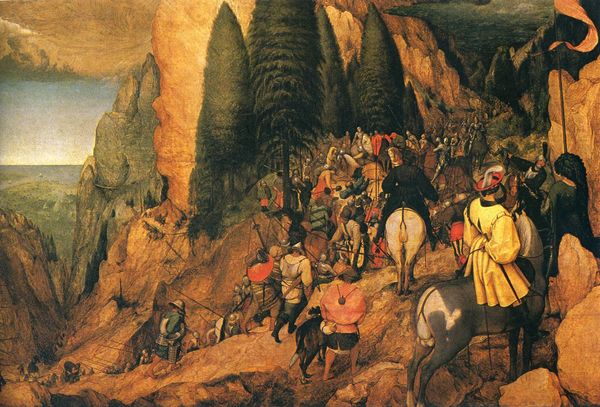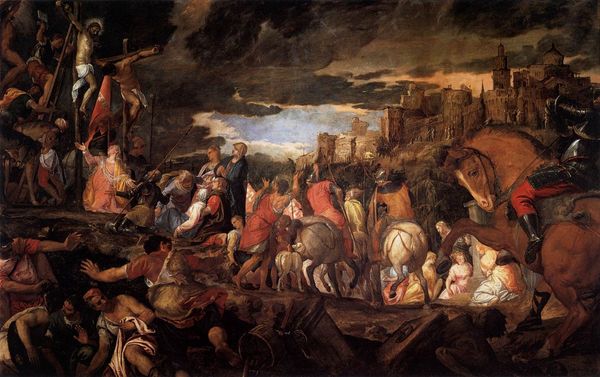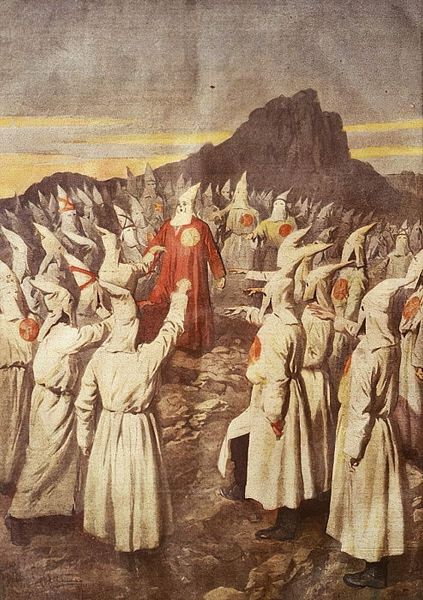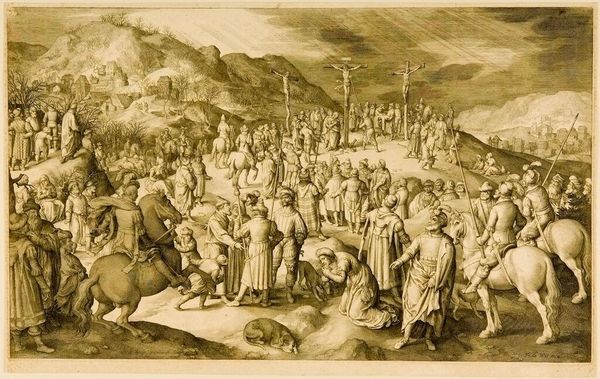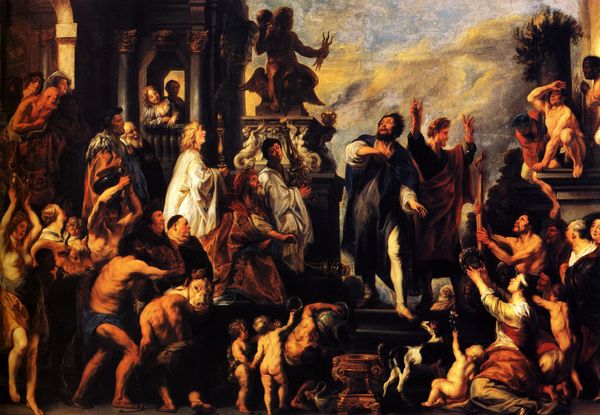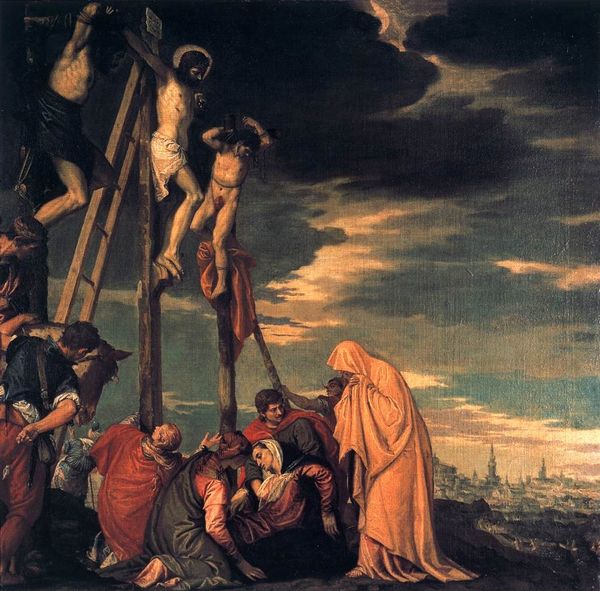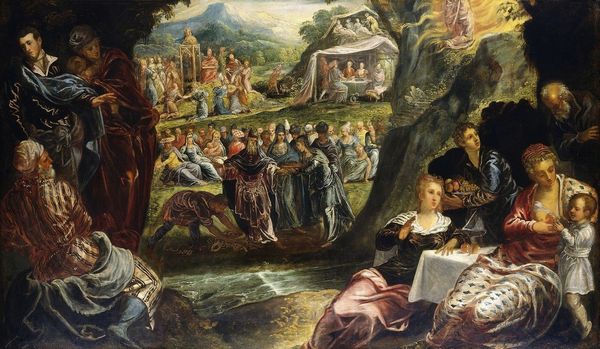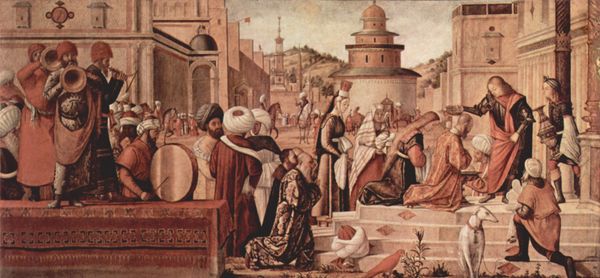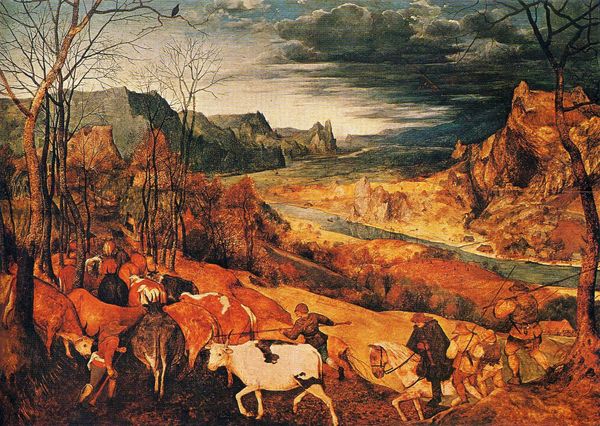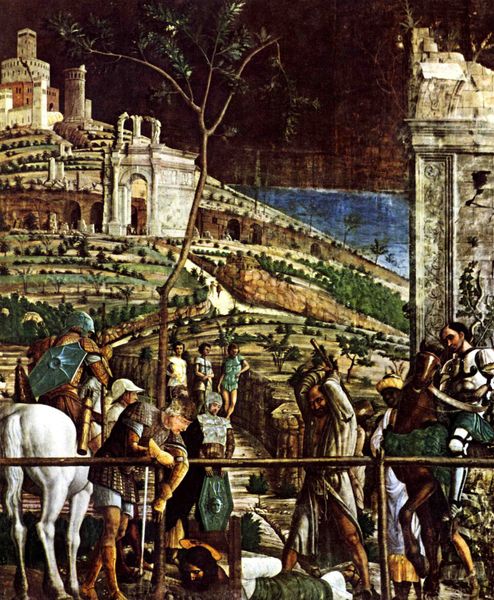
painting, oil-paint
#
portrait
#
narrative-art
#
painting
#
oil-paint
#
oil painting
#
christianity
#
genre-painting
#
history-painting
#
italian-renaissance
Dimensions: 170 x 142 cm
Copyright: Public domain
Curator: This image immediately feels like a crowded stage—all these figures participating in what looks like a very deliberate act of violence. Editor: Indeed, Vittore Carpaccio, around 1520, committed this scene, "The Stoning of Saint Stephen," to oil paint, and it now resides at the Staatsgalerie in Stuttgart. He presents us with a vivid and unsettling historical tableau. Curator: What's striking is the contrast: this single figure kneeling, robed, facing upward versus this frenzied mob. Stephen's pose reads as total submission. It begs the question of power, doesn’t it? Is he really powerless in this moment, or is there something else being communicated here? Editor: Absolutely, the symbolism is potent. We are visually reminded that Stephen was the first Christian martyr, so he signifies unwavering faith. His upward gaze isn’t desperation; it is about the promise of divine salvation amid persecution, something the early church desperately needed to portray. Curator: And even the stones—are they just instruments of death or a collective symbol of shared belief driving violence? Consider how group dynamics often work: individuals subsuming their conscience in service of the perceived moral authority of the crowd. Carpaccio’s use of perspective adds a further psychological dimension. The way he lines up figures emphasizes their participation in something they can’t now extract themselves from. Editor: Good point, these public executions also held a significant social function in Renaissance Italy; they reaffirmed societal hierarchies, reminding people of the costs of dissent from the established order. Paintings such as this don’t merely depict a historical event; they reflect how the state weaponized belief as an active, persuasive, public performance. Curator: It all comes back to that powerful vertical axis anchored by Stephen—he’s not merely being killed, but transformed into an iconic figure. Through suffering and sacrifice, a legend is made. Editor: By studying the piece with both its artistic elements and the politics surrounding that moment, hopefully visitors come away with a fresh appreciation of the work’s artistic power. Curator: Precisely! What might initially seem like a history lesson is, in truth, a compelling visual examination of faith, power, and the construction of memory.
Comments
No comments
Be the first to comment and join the conversation on the ultimate creative platform.
